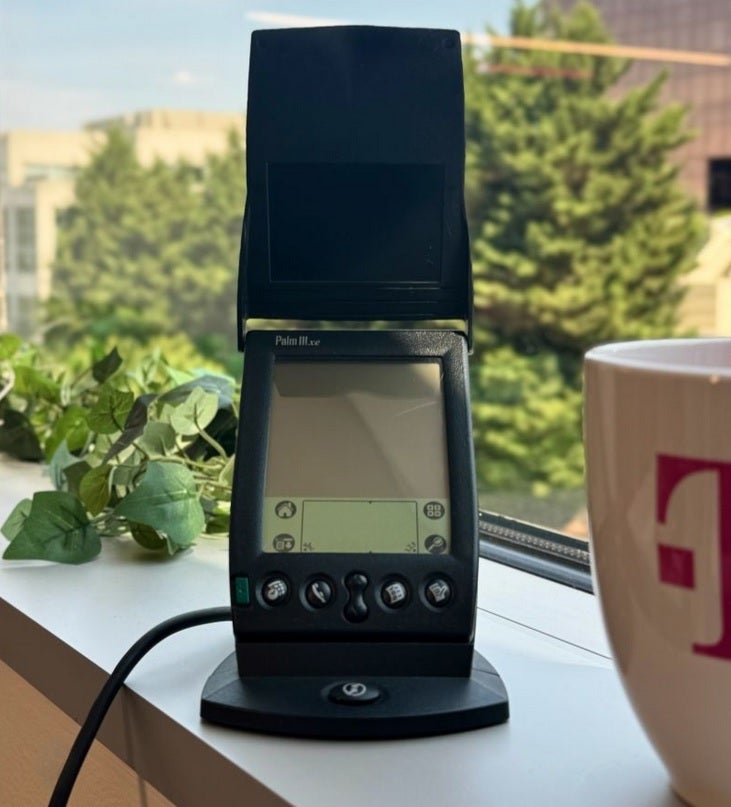Under the hood of the Palm IIIxe was a 16 MHz Motorola 68328 EZ DragonBall CPU along with 8MB of RAM and 2 MB of internal flash memory. At the time, this was enough for the device to install third-party applications and store a large amount of data. The display featured a 160 x 160 resolution and was monochrome with four different shades of gray. An infrared (IrDA) port was able to beam data to compatible devices. Data could be synced to a computer using a serial port and a HotSync cradle.


A Palm IIIxe PDA released in early 2000 and found in a T-Mobile office. | Image credit-Mike Sievert
Imagine if your iPhone or Android handset could run for a month on two standard AAA batteries. That is all that was needed to power the obviously less capable Palm IIIxe PDA for 30 days. While the PDA does not do all of the things that a smartphone does today, and as fast as a smartphone runs your tasks, you can see the beginnings of the modern smartphone era in some of these devices.
“It’s fun to look back and see how far we’ve come. From PDAs to cellphones to smartphones to 5G … and now, AI is redefining what’s possible again. This journey’s only getting more interesting!
The executive also gave us some personal history as he wrote that when this device was launched, he was the head of sales and marketing at online brokerage firm E*TRADE. It was an interesting time, according to Sievert, who wrote that E*TRADE was making big bets on what the combination of digital and mobile could do. It’s amazing how far the mobile and digital worlds have come since the Palm IIIxe was released. It surely seemed like a magical device at the time. Look at what we can do these days with the phones in our hands and pockets.
#presmartphone #era #mobile #device #TMobile #office
